 Facebook
Facebook
 X
X
 Instagram
Instagram
 TikTok
TikTok
 Youtube
Youtube
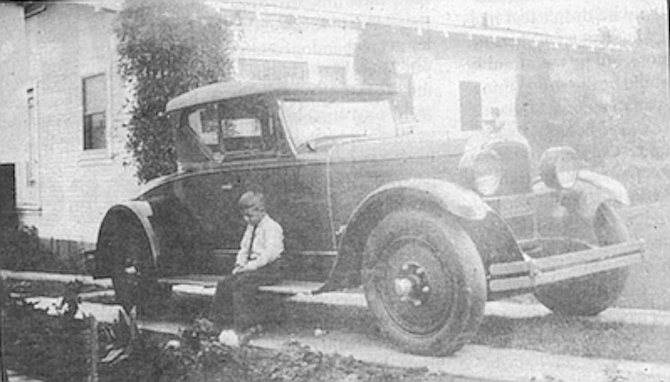
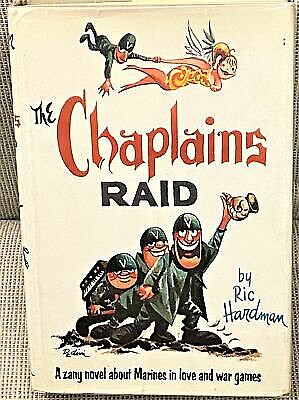
IF I WENT TO OCEANSIDE I had to wear dark glasses and keep my collar turned up for fear of being discovered alone when I was supposed to be with the Girl from Escondido. Frequently I stayed clear of town, spending the liberty hours alone on the beach inventing new episodes to hold the attention of my hut mates. I got to be as lonely and furtive as a criminal.
Sometimes I slipped into Oceanside after dark and ducked into the Palomar or the Star theatres and watched a guts and glory action film, just to have a place to sit down.... Most times I sat through the mayhem twice, waiting for the streets outside to clear so I wouldn’t be seen by some agent who could report me to Laperuta. Around two o’clock in the morning I’d leave the all-night theatre and walk down Hill Street with the ready excuse that I’d just left my girl, in case I was challenged.
I’d pass the no down payment, no carrying charges, no previous credit required direct diamond importer jewelry stores and stop to stare at the ice in the windows, wondering if I ought to buy a diamond for my girl. That’s how far my thinking had gone. I could show the installment book to Laperuta and maybe he'd give her more credit.
I stayed clear of the U.S.O. at Third and Tremont, scuttling down the alley to read the esplanade which ran along the beach, passing signs for bait, tackle, beach supplies, bloodworms and bad rests.
I had never been so lonely in my life.
Richards L. Hardman The Chaplains Raid 1965
LAST YEAR THE COASTLINE suffered more than 2,000 beach closures due to sewage.
Forty percent of those closures (745 separate incidents) were in California....
Issued this summer by the New York-based Natural Resources Defense Council, Testing the Waters: A National Perspective on Beach Closings lays out cruel evidence that coastal water quality is in serious jeopardy nationwide....
A close look at the situation in California underscores the out-of-control nature of the problem. Running some six pages, the report’s California summary reads like a big-city police blotter:
[beaches, all in San Diego County, listed with closure dates:] 1/9-1/10, La Jolla Her-soma [sic] Park; 1/10-1/17, Coronado Cays; 1/17-1/18, Oceanside City Beach; 1/19-1/25, Los Pensaquitos [sic] Lagoon; 1/26-1/27, End of Garnet Ave.
And those are just the first five entries. San Diego County alone accounted for 382 beach closures in 1991, giving the area a substantial “lead” over nearby Orange County, which weighed in with 168 closures.
Allston James “Raw Deal” Surfer Magazine January 1993
INTO THE LENGTH OF San Diego Bay the downtown area of San Diego protrudes like a bent elbow; the forearm then follows a gradually rising ridge northward to end in a promontory called Mission Hills, which, broken up into canyons and ridges, resembles very much a hand with the fingers clenched to hold it tightly there, above the mud-
flats and Old Town. The main artery of Mission Hills is Fort Stockton Drive, which follows the central ridge to the end of the promontory. Intersecting Fort Stockton, side streets run out on the tributary ridges where there are smaller neighborhoods within the whole of Mission Hills.
The neighborhood off Balboa Drive was, in 1928, a new one, a subdivision fleshing out in the prevalent style of low, Spanish-type houses: with white stucco walls bright in the sun, and red tile roofs and new lawns green and close shaven, and the asphalt streets and the sidewalks neatly black and white; with vacant lots marked sold, and dusty men with mules and fresnos leveling the lots, carpenters in white overalls raising yellow skeletons of two-by-fours, and the neighbors speculating on the size of the houses and how much money was going into them, and the children quoting the comments of their parents and playing in the structures after the carpenters had gone home at night.
The people who lived near Balboa Drive in Mission Hills were not rich, but they were making more money than ever before. Their new homes were probably heavily mortgaged and their new cars had cost more than they could afford; but they were proud of their houses and their cars and of being able to live in Mission Hills and bring up their children in such a nice residential area. Mostly they were young. They were doctors or owned successful stores, they were in banks or were doing well selling insurance, or they ran automobile agencies or construction companies....
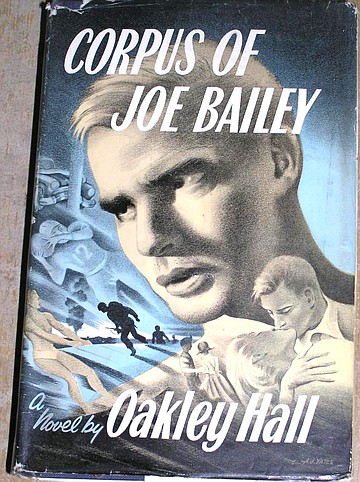
Peter closed his eyes. They were all strangers, and he, Peter, was a trespasser....
But he had promised Joe he would come to see him, and since Joe permitted himself no other friend, he, Peter, must still be Joe’s best friend.
It seemed something that must be held onto. So that weekend he rode the streetcar down to Twenty-sixth Street to Joe’s house, taking his de Havilland flying model with him. They flew it in the park and then looked over the surfboard plans for which Joe had written to Popular Mechanics. They began working on the surfboards over Christmas, when Joe had several days off from his job....
By the end of Easter vacation they had finished them, all but the varnishing, and the following Saturday noon Peter met Joe downtown on the corner of Eighth and E Streets, as he always did, for he knew that Joe still did not
like him to come to his father’s garage. They bought the varnish, each of them paying for a quart and carrying the cans in separate paper sacks. They walked past the library, where several ragged men were sprawled on the grass, some with newspapers protecting their faces from the sun. “Damn tramps,” Joe whispered. They went on up E Street, past the EPIC Cafe and the New Economy barbershop that had a faded picture of Upton Sinclair in a corner of the window. In front of the drugstore where they waited for the streetcar was a metal rack holding the San Diego Tribune, the Los Angeles Examiner, the Townsend Weekly. The Tribune headlines read: “Brewery Strikers Reject Ultimatum.”
“Don’t you wish you had a famous uncle like mine?” Joe asked bitterly.
Peter didn’t answer. Joe’s Uncle Dick was someone important in the brewery union; Joe had told him that, and in his voice had been an intense mixture of anger, contempt, and pride. It was one of those things, he knew, about which it was better not to talk to Joe at all.
Oakley Hall Corpus of Joe Bailey 1953
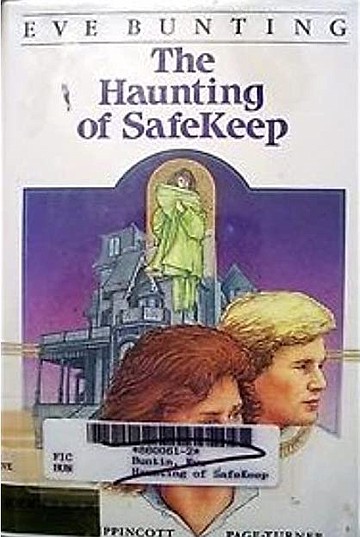
I WALKED ACROSS THE CAMPUS and up the steps to the administration building. The hallways held that cool, echoing quiet that meant there were no classes in progress, no activities. No students. Spring semester was over, summer school had not yet begun, and San Diego State was resting between lives....
Of course [Dev] had a car. Cashmere sweaters, thin gold watches and jeans that said Calvin Klein across the butt did not travel by bus, I reminded myself as we walked to the parking lot.
The usually jammed E lot was almost empty. Dev stopped at a yellow convertible and fished out his keys....
We were out on College Avenue now, cruising south down the hill toward the freeway. I had to keep my head slightly bent, since my seat was about a foot higher than his and I felt that I was sticking up enough to divert traffic. I tried scrunching down so my face would at least be behind the windshield, but my knees wouldn’t go past the dash.
Dev glanced across at me. “I don’t think I’ve had anybody as tall as you in that seat before.” The way he said it made me seem like a freak. “Are you all right?”
“Just fine.”
We zipped past Murphy Stadium, where the Chargers and the Padres play. Hot air blew my hair, and I tried to hold it down with my arm.
“Love convertibles!” I yelled.
The traffic was vicious, the way it always is at that time of evening, and the blue of the evening sky was dulled by a veil of smog. My father said they didn’t have smog in San Diego when he lived here, but he might have forgotten.
“There it is,” Dev said.
I looked across the lanes of traffic, heat shimmering from metal sides, tires sizzling on the asphalt, and I saw SafeKeep. It lay like a cool, green oasis in a desert of ugliness. The city had given this piece of land to the conservation groups, and they had cleaned it up and planted grass and flowering shrubs before they began their mission of saving the mansions and moving them to their new quarters at SafeKeep....
What would people who didn’t know about this think it was? A movie set, probably. They’d stop, and gawk, and wait for Robert Redford to appear on the porch of the Chapman House dressed in his Great Gatsby whites. Drivers passing on the freeway did slow down and gawk. That was why there’d been some accidents out there, and an editorial in the Union about the dangers of putting something as mind-boggling as SafeKeep in full view of a freeway....
Around lunchtime I took the silver-and-blue bus that went up to Mission Gorge Road. The morning haze had gone, the sun was out, and kids, freed from school, rattled on roller skates along the sidewalk. A puppy attacked the spray that spouted up from a broken sprinkler on a lawn. Water beaded his black fur. The hills on either side of the highway were lush with tufted grass and bright with wild mustard. I felt happier than I’d felt in months.
It was after one when I got to the top of the road, and by then I was the only person left on the bus.
I got out and stood in front of the gates. The plaque was dull and tarnished. Fiona never quite got around to polishing it often enough to keep it shining. I ran my fingers across the engraved letters. BELLA VISTA CHILDREN’S HOME. Bella Vista meant “beautiful view,” I’d been told years and years ago, when I’d lived here. And in spite of all the new buildings, the view was still beautiful across the golden hillsides and the red tiled roofs to the bay. The flag on the top of the Sea World tower fluttered, and to the right the metallic blue dome of the University of San Diego glittered bright against the sky.
White sails spiked the channel that ran between Mission Bay and the ocean. Bella, Bella Vista. I unlatched the gates and went in....
Ever since we’d left that morning, I’d debated telling [Dev] about the caped figure by the church last night. But somehow I couldn’t. What a cuckoo, he’d think! First the invisible crying baby, now a shadow woman.
I’d waited too long, anyway. Already we were in the Shelter Island Marina, passing the low brick offices and the Captain’s Locker with the wooden Ahab outside. Dev parked beside a bed of bright pink geraniums.
Eve Bunting The Haunting of SafeKeep 1985
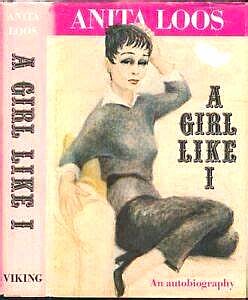
WHEN WE MOVED SOUTH, San Diego was only just large enough to be called a city.
The principal shopping district extended a mere six blocks on Fifth Street. A sizable park overlooked it from a hill, and the waterfront was close at hand, the harbor bristling with boats: large ones belonging to the United States Navy, and any number of pleasure craft. San Diego seemed both cozy and festive; sailors in white uniforms animated the streets, and the sea air was clear and invigorating. Directly across the bay the resort town of Coronado spread along a sandy strip that ran parallel to the coast for several miles.
The Hotel Del Coronado was a famous winter resort for rich people from the East.
I had read fascinating items about it in the society columns, seen pictures of it in the rotogravures. Clearly visible across San Diego Bay, it sparkled in the sunlight, a white structure of the “casino” type with acres of red roof. I could hardly wait to explore a paradise that was so near.
The very first morning I prepared to invade Coronado with Pop as an escort. It was a gratifying experience, for there were several of Nina’s Paris gowns to choose from. I finally settled on a black velvet model from Paquin, with a wide band of brown fur around the hem....
A brisk ten-minute trip by ferry across the bay, followed by a ride in a bumpy little streetcar, landed us at the hotel. But as we entered the grounds I began to feel overawed in spite of my Paris gown; the gardens were so pretentiously well kept that the plants looked snooty. We climbed a broad staircase onto a pompous veranda and entered the hotel. Its lobby appeared to be endless; it was dazzlingly white with panels outlined in gold, and the carpet was bright red, a color scheme which still remains in my mind’s eye as the peak of luxury. At the back of the lobby gigantic glass doors opened onto a courtyard where the tropical vegetation seemed so outlandish that it might have been painted by Henri Rousseau.
In my eyes those commanding premises took second place to the hotel’s guests, for it was the very height of the winter season and the lobby was filled with rich pleasure-seekers, many of them dressed for yachting, tennis, or polo. I recognized from pictures in the rotogravures the noted young horsewoman “Eleo” Sears, who, it seemed, was an annual visitor from Boston. Her hair, innocent of the marcel wave I had laboriously achieved, was in a rather scraggly pompadour, and she wore a tailored shirtwaist dress of white linen that had practically a man’s collar and a necktie. As I watched those sophisticates, my courage rapidly oozed away. My Paquin gown, which less than an hour before had seemed the height of chic, had suddenly become tacky. I now realized I was a victim of provincial bad taste, for in Southern California we followed the styles in the ladies’ magazines, which were geared to Eastern climates, and during the warm winter months everybody sweltered
in heavy woolen garments. But the Coronado ladies of fashion were properly dressed for a warm climate in linen that was mostly white and didn’t even look expensive....
If I have described Coronado at some length, it is because of the part it played in changing my entire life; it was where I first met the “cosmopolites” for whom I forever deserted Pop’s dear but tacky companions; where for a few seasons I had my first and last taste of life as a normal young girl; and where I was married for a matter of two days (which wasn’t exactly so normal)....
It was in my brother’s [medical] office that I had my first encounter with ladies of the evening and decided that the real truth about them was not that they possessed the “hearts of gold” described in fiction but that they had heads of bone. Their traditional generosity came from stupid wastefulness, and they were, almost without exception, morons.
Those San Diego ladies of the evening may have given me a slant on that timeworn profession, which I was to capitalize on when I wrote Gentlemen Prefer Blondes. For I couldn’t take seriously the lost virtue of a heroine who was too dense to have any kind of emotional experiences at all. The first to let me know there was any novelty in my attitude was H. L. Mencken. “Young woman,” said he, “do you realize you are the first American writer ever to make fun of sex?”...
My “clothes sense” seemed vindicated one afternoon when Mother and I happened to be passing the U. S. Grant Hotel. I was hampered by an ankle-length hobble skirt of Aunt Nina’s which boasted a slit that reached almost to the knee and was the first of its kind ever to be seen in San Diego. At this fateful moment the entire Yankee baseball team, in town for their first Western game, emerged from the hotel, and as one man they whistled at me. Mother tried not to faint. But for me a striving had at length paid off. I felt they saw me as a fellow New Yorker and saluted them, as if to announce that I too had been born in Arcadia.
Such occasions, interspersed with a few trips to the Sunday bullfights just across the border in Tijuana, Mexico, comprised most of my thrills. The bullfighters had been regular patrons of the Rudwin Theatre, so my presence at ringside was noticed, and it was flattering when those second-rate matadors tossed me their capes to drape over the front of the box.
Anita Loos A Girl Like I 1966
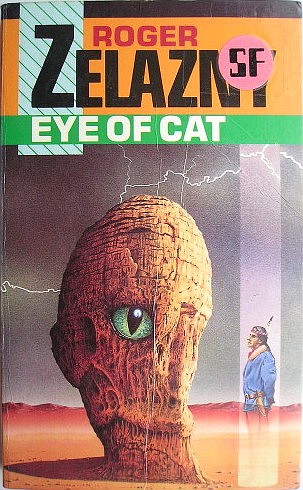
DARKNESS AMID the tiny streetlights, and the sound of crickets outside the booth ...
He stepped out of the shelter and sniffed the damp air. Large, shadow-decked trees; enviable quantities of grass furring hillsides; heavy, squat, monolithic buildings, dark now, save for little entranceway lights providing tiny grottoes which only accentuated the blackness elsewhere; no people in sight.
He moved along the sidewalk, crossed the street, cut up a hillside. There were guards about, but he avoided them without difficulty. Balboa Park was quiet now, its spectacles closed to the public until morning. The lights of San Diego and the traffic along its trailways were visible from various high points he crossed, but these seemed distant, part of another world. He moved soundlessly from shadow to shadow. He had chosen a public booth he had sometimes liked to use long ago, when he had come on normal, daytime business, enjoying the walk rather than tripping directly into the place with which he was associated. That place, of course, was now closed for the night, its trip-box also shut down.
For fifteen minutes he continued his trek, climbing and hiking toward the vast, sprawling complex that was the Interstellar Life Institute. He avoided sidewalks, parking lots and roads as much as possible. Mixed animal smells from the San Diego Zoo were occasionally borne to him in open areas by vagrant currents of wind. Rich and jungley, the smells of some of the zoo foliage also came to him. These sensations stirred memories of other exotic creatures in other places. He recalled the capture of the wire-furred wullabree in a pen of ultrasonics, the twilpa in an ice pit, four outan in a vortex of odors....
Roger Zelazny Eye of Cat 1982
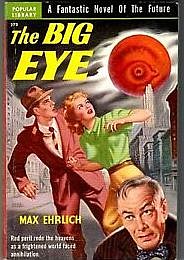
MORGAN, A LONG STRING BEAN of a man with a constant grin under his sandy hair, was the spectrograph expert at Palomar. He had worked with David at the Harvard Observatory, later served a term at Yerkes, then at Mount Wilson, and finally hooked onto the Big Eye under the Old Man. Like David, he was a bachelor, and the two of them lived in the dormitory, an ascetic, monk-like place of soundproofed walls and doors and black curtains, for men who slept all day and worked all night....
This spectrograph plate was fogged. “Mostly the scattered blue light of mercury,” explained Morgan. “From the advertising signs in San Diego. It’s been ruining our plates. Remember the last mess with the 100-inch eye at Mount Wilson? Los Angeles was growing too fast for the observatory there. The lights began to creep way out in the suburbs, making a nebula of their own and cluttering up the sky. That white, acrid haze they called smog climbed right over Mount Wilson, dimming the sky nebulae.” David returned the plate to Morgan, and he restored it to the box. “And now we’ve got the same thing, Dave. San Diego’s grown almost as big as Los Angeles in the last ten years, and conditions have been getting worse every day because of those damned lights.”
“I know,” said David. “I went down into Dago with the Old Man when he delivered a speech before the San Diego-California Club, complaining about the new neon and electric signs they were putting up. Asked them for an ordinance to stop it.” “And what did they say?” “Oh, they were very polite about it. But they said the Old Man was asking too much, he was trying to stop progress.”
Max Ehrlich The Big Eye 1949
The Reader will pay $10 for submissions to "Out of Context" that are selected for publication. Choices must be drawn from books or out-of-town periodicals. Include author, title, date of publication, and your phone number. Send to "Out of Context," 2323 Broadway, San Diego, CA 92102



IF I WENT TO OCEANSIDE I had to wear dark glasses and keep my collar turned up for fear of being discovered alone when I was supposed to be with the Girl from Escondido. Frequently I stayed clear of town, spending the liberty hours alone on the beach inventing new episodes to hold the attention of my hut mates. I got to be as lonely and furtive as a criminal.
Sometimes I slipped into Oceanside after dark and ducked into the Palomar or the Star theatres and watched a guts and glory action film, just to have a place to sit down.... Most times I sat through the mayhem twice, waiting for the streets outside to clear so I wouldn’t be seen by some agent who could report me to Laperuta. Around two o’clock in the morning I’d leave the all-night theatre and walk down Hill Street with the ready excuse that I’d just left my girl, in case I was challenged.
I’d pass the no down payment, no carrying charges, no previous credit required direct diamond importer jewelry stores and stop to stare at the ice in the windows, wondering if I ought to buy a diamond for my girl. That’s how far my thinking had gone. I could show the installment book to Laperuta and maybe he'd give her more credit.
I stayed clear of the U.S.O. at Third and Tremont, scuttling down the alley to read the esplanade which ran along the beach, passing signs for bait, tackle, beach supplies, bloodworms and bad rests.
I had never been so lonely in my life.
Richards L. Hardman The Chaplains Raid 1965
LAST YEAR THE COASTLINE suffered more than 2,000 beach closures due to sewage.
Forty percent of those closures (745 separate incidents) were in California....
Issued this summer by the New York-based Natural Resources Defense Council, Testing the Waters: A National Perspective on Beach Closings lays out cruel evidence that coastal water quality is in serious jeopardy nationwide....
A close look at the situation in California underscores the out-of-control nature of the problem. Running some six pages, the report’s California summary reads like a big-city police blotter:
[beaches, all in San Diego County, listed with closure dates:] 1/9-1/10, La Jolla Her-soma [sic] Park; 1/10-1/17, Coronado Cays; 1/17-1/18, Oceanside City Beach; 1/19-1/25, Los Pensaquitos [sic] Lagoon; 1/26-1/27, End of Garnet Ave.
And those are just the first five entries. San Diego County alone accounted for 382 beach closures in 1991, giving the area a substantial “lead” over nearby Orange County, which weighed in with 168 closures.
Allston James “Raw Deal” Surfer Magazine January 1993
INTO THE LENGTH OF San Diego Bay the downtown area of San Diego protrudes like a bent elbow; the forearm then follows a gradually rising ridge northward to end in a promontory called Mission Hills, which, broken up into canyons and ridges, resembles very much a hand with the fingers clenched to hold it tightly there, above the mud-
flats and Old Town. The main artery of Mission Hills is Fort Stockton Drive, which follows the central ridge to the end of the promontory. Intersecting Fort Stockton, side streets run out on the tributary ridges where there are smaller neighborhoods within the whole of Mission Hills.
The neighborhood off Balboa Drive was, in 1928, a new one, a subdivision fleshing out in the prevalent style of low, Spanish-type houses: with white stucco walls bright in the sun, and red tile roofs and new lawns green and close shaven, and the asphalt streets and the sidewalks neatly black and white; with vacant lots marked sold, and dusty men with mules and fresnos leveling the lots, carpenters in white overalls raising yellow skeletons of two-by-fours, and the neighbors speculating on the size of the houses and how much money was going into them, and the children quoting the comments of their parents and playing in the structures after the carpenters had gone home at night.
The people who lived near Balboa Drive in Mission Hills were not rich, but they were making more money than ever before. Their new homes were probably heavily mortgaged and their new cars had cost more than they could afford; but they were proud of their houses and their cars and of being able to live in Mission Hills and bring up their children in such a nice residential area. Mostly they were young. They were doctors or owned successful stores, they were in banks or were doing well selling insurance, or they ran automobile agencies or construction companies....

Peter closed his eyes. They were all strangers, and he, Peter, was a trespasser....
But he had promised Joe he would come to see him, and since Joe permitted himself no other friend, he, Peter, must still be Joe’s best friend.
It seemed something that must be held onto. So that weekend he rode the streetcar down to Twenty-sixth Street to Joe’s house, taking his de Havilland flying model with him. They flew it in the park and then looked over the surfboard plans for which Joe had written to Popular Mechanics. They began working on the surfboards over Christmas, when Joe had several days off from his job....
By the end of Easter vacation they had finished them, all but the varnishing, and the following Saturday noon Peter met Joe downtown on the corner of Eighth and E Streets, as he always did, for he knew that Joe still did not
like him to come to his father’s garage. They bought the varnish, each of them paying for a quart and carrying the cans in separate paper sacks. They walked past the library, where several ragged men were sprawled on the grass, some with newspapers protecting their faces from the sun. “Damn tramps,” Joe whispered. They went on up E Street, past the EPIC Cafe and the New Economy barbershop that had a faded picture of Upton Sinclair in a corner of the window. In front of the drugstore where they waited for the streetcar was a metal rack holding the San Diego Tribune, the Los Angeles Examiner, the Townsend Weekly. The Tribune headlines read: “Brewery Strikers Reject Ultimatum.”
“Don’t you wish you had a famous uncle like mine?” Joe asked bitterly.
Peter didn’t answer. Joe’s Uncle Dick was someone important in the brewery union; Joe had told him that, and in his voice had been an intense mixture of anger, contempt, and pride. It was one of those things, he knew, about which it was better not to talk to Joe at all.
Oakley Hall Corpus of Joe Bailey 1953

I WALKED ACROSS THE CAMPUS and up the steps to the administration building. The hallways held that cool, echoing quiet that meant there were no classes in progress, no activities. No students. Spring semester was over, summer school had not yet begun, and San Diego State was resting between lives....
Of course [Dev] had a car. Cashmere sweaters, thin gold watches and jeans that said Calvin Klein across the butt did not travel by bus, I reminded myself as we walked to the parking lot.
The usually jammed E lot was almost empty. Dev stopped at a yellow convertible and fished out his keys....
We were out on College Avenue now, cruising south down the hill toward the freeway. I had to keep my head slightly bent, since my seat was about a foot higher than his and I felt that I was sticking up enough to divert traffic. I tried scrunching down so my face would at least be behind the windshield, but my knees wouldn’t go past the dash.
Dev glanced across at me. “I don’t think I’ve had anybody as tall as you in that seat before.” The way he said it made me seem like a freak. “Are you all right?”
“Just fine.”
We zipped past Murphy Stadium, where the Chargers and the Padres play. Hot air blew my hair, and I tried to hold it down with my arm.
“Love convertibles!” I yelled.
The traffic was vicious, the way it always is at that time of evening, and the blue of the evening sky was dulled by a veil of smog. My father said they didn’t have smog in San Diego when he lived here, but he might have forgotten.
“There it is,” Dev said.
I looked across the lanes of traffic, heat shimmering from metal sides, tires sizzling on the asphalt, and I saw SafeKeep. It lay like a cool, green oasis in a desert of ugliness. The city had given this piece of land to the conservation groups, and they had cleaned it up and planted grass and flowering shrubs before they began their mission of saving the mansions and moving them to their new quarters at SafeKeep....
What would people who didn’t know about this think it was? A movie set, probably. They’d stop, and gawk, and wait for Robert Redford to appear on the porch of the Chapman House dressed in his Great Gatsby whites. Drivers passing on the freeway did slow down and gawk. That was why there’d been some accidents out there, and an editorial in the Union about the dangers of putting something as mind-boggling as SafeKeep in full view of a freeway....
Around lunchtime I took the silver-and-blue bus that went up to Mission Gorge Road. The morning haze had gone, the sun was out, and kids, freed from school, rattled on roller skates along the sidewalk. A puppy attacked the spray that spouted up from a broken sprinkler on a lawn. Water beaded his black fur. The hills on either side of the highway were lush with tufted grass and bright with wild mustard. I felt happier than I’d felt in months.
It was after one when I got to the top of the road, and by then I was the only person left on the bus.
I got out and stood in front of the gates. The plaque was dull and tarnished. Fiona never quite got around to polishing it often enough to keep it shining. I ran my fingers across the engraved letters. BELLA VISTA CHILDREN’S HOME. Bella Vista meant “beautiful view,” I’d been told years and years ago, when I’d lived here. And in spite of all the new buildings, the view was still beautiful across the golden hillsides and the red tiled roofs to the bay. The flag on the top of the Sea World tower fluttered, and to the right the metallic blue dome of the University of San Diego glittered bright against the sky.
White sails spiked the channel that ran between Mission Bay and the ocean. Bella, Bella Vista. I unlatched the gates and went in....
Ever since we’d left that morning, I’d debated telling [Dev] about the caped figure by the church last night. But somehow I couldn’t. What a cuckoo, he’d think! First the invisible crying baby, now a shadow woman.
I’d waited too long, anyway. Already we were in the Shelter Island Marina, passing the low brick offices and the Captain’s Locker with the wooden Ahab outside. Dev parked beside a bed of bright pink geraniums.
Eve Bunting The Haunting of SafeKeep 1985

WHEN WE MOVED SOUTH, San Diego was only just large enough to be called a city.
The principal shopping district extended a mere six blocks on Fifth Street. A sizable park overlooked it from a hill, and the waterfront was close at hand, the harbor bristling with boats: large ones belonging to the United States Navy, and any number of pleasure craft. San Diego seemed both cozy and festive; sailors in white uniforms animated the streets, and the sea air was clear and invigorating. Directly across the bay the resort town of Coronado spread along a sandy strip that ran parallel to the coast for several miles.
The Hotel Del Coronado was a famous winter resort for rich people from the East.
I had read fascinating items about it in the society columns, seen pictures of it in the rotogravures. Clearly visible across San Diego Bay, it sparkled in the sunlight, a white structure of the “casino” type with acres of red roof. I could hardly wait to explore a paradise that was so near.
The very first morning I prepared to invade Coronado with Pop as an escort. It was a gratifying experience, for there were several of Nina’s Paris gowns to choose from. I finally settled on a black velvet model from Paquin, with a wide band of brown fur around the hem....
A brisk ten-minute trip by ferry across the bay, followed by a ride in a bumpy little streetcar, landed us at the hotel. But as we entered the grounds I began to feel overawed in spite of my Paris gown; the gardens were so pretentiously well kept that the plants looked snooty. We climbed a broad staircase onto a pompous veranda and entered the hotel. Its lobby appeared to be endless; it was dazzlingly white with panels outlined in gold, and the carpet was bright red, a color scheme which still remains in my mind’s eye as the peak of luxury. At the back of the lobby gigantic glass doors opened onto a courtyard where the tropical vegetation seemed so outlandish that it might have been painted by Henri Rousseau.
In my eyes those commanding premises took second place to the hotel’s guests, for it was the very height of the winter season and the lobby was filled with rich pleasure-seekers, many of them dressed for yachting, tennis, or polo. I recognized from pictures in the rotogravures the noted young horsewoman “Eleo” Sears, who, it seemed, was an annual visitor from Boston. Her hair, innocent of the marcel wave I had laboriously achieved, was in a rather scraggly pompadour, and she wore a tailored shirtwaist dress of white linen that had practically a man’s collar and a necktie. As I watched those sophisticates, my courage rapidly oozed away. My Paquin gown, which less than an hour before had seemed the height of chic, had suddenly become tacky. I now realized I was a victim of provincial bad taste, for in Southern California we followed the styles in the ladies’ magazines, which were geared to Eastern climates, and during the warm winter months everybody sweltered
in heavy woolen garments. But the Coronado ladies of fashion were properly dressed for a warm climate in linen that was mostly white and didn’t even look expensive....
If I have described Coronado at some length, it is because of the part it played in changing my entire life; it was where I first met the “cosmopolites” for whom I forever deserted Pop’s dear but tacky companions; where for a few seasons I had my first and last taste of life as a normal young girl; and where I was married for a matter of two days (which wasn’t exactly so normal)....
It was in my brother’s [medical] office that I had my first encounter with ladies of the evening and decided that the real truth about them was not that they possessed the “hearts of gold” described in fiction but that they had heads of bone. Their traditional generosity came from stupid wastefulness, and they were, almost without exception, morons.
Those San Diego ladies of the evening may have given me a slant on that timeworn profession, which I was to capitalize on when I wrote Gentlemen Prefer Blondes. For I couldn’t take seriously the lost virtue of a heroine who was too dense to have any kind of emotional experiences at all. The first to let me know there was any novelty in my attitude was H. L. Mencken. “Young woman,” said he, “do you realize you are the first American writer ever to make fun of sex?”...
My “clothes sense” seemed vindicated one afternoon when Mother and I happened to be passing the U. S. Grant Hotel. I was hampered by an ankle-length hobble skirt of Aunt Nina’s which boasted a slit that reached almost to the knee and was the first of its kind ever to be seen in San Diego. At this fateful moment the entire Yankee baseball team, in town for their first Western game, emerged from the hotel, and as one man they whistled at me. Mother tried not to faint. But for me a striving had at length paid off. I felt they saw me as a fellow New Yorker and saluted them, as if to announce that I too had been born in Arcadia.
Such occasions, interspersed with a few trips to the Sunday bullfights just across the border in Tijuana, Mexico, comprised most of my thrills. The bullfighters had been regular patrons of the Rudwin Theatre, so my presence at ringside was noticed, and it was flattering when those second-rate matadors tossed me their capes to drape over the front of the box.
Anita Loos A Girl Like I 1966

DARKNESS AMID the tiny streetlights, and the sound of crickets outside the booth ...
He stepped out of the shelter and sniffed the damp air. Large, shadow-decked trees; enviable quantities of grass furring hillsides; heavy, squat, monolithic buildings, dark now, save for little entranceway lights providing tiny grottoes which only accentuated the blackness elsewhere; no people in sight.
He moved along the sidewalk, crossed the street, cut up a hillside. There were guards about, but he avoided them without difficulty. Balboa Park was quiet now, its spectacles closed to the public until morning. The lights of San Diego and the traffic along its trailways were visible from various high points he crossed, but these seemed distant, part of another world. He moved soundlessly from shadow to shadow. He had chosen a public booth he had sometimes liked to use long ago, when he had come on normal, daytime business, enjoying the walk rather than tripping directly into the place with which he was associated. That place, of course, was now closed for the night, its trip-box also shut down.
For fifteen minutes he continued his trek, climbing and hiking toward the vast, sprawling complex that was the Interstellar Life Institute. He avoided sidewalks, parking lots and roads as much as possible. Mixed animal smells from the San Diego Zoo were occasionally borne to him in open areas by vagrant currents of wind. Rich and jungley, the smells of some of the zoo foliage also came to him. These sensations stirred memories of other exotic creatures in other places. He recalled the capture of the wire-furred wullabree in a pen of ultrasonics, the twilpa in an ice pit, four outan in a vortex of odors....
Roger Zelazny Eye of Cat 1982

MORGAN, A LONG STRING BEAN of a man with a constant grin under his sandy hair, was the spectrograph expert at Palomar. He had worked with David at the Harvard Observatory, later served a term at Yerkes, then at Mount Wilson, and finally hooked onto the Big Eye under the Old Man. Like David, he was a bachelor, and the two of them lived in the dormitory, an ascetic, monk-like place of soundproofed walls and doors and black curtains, for men who slept all day and worked all night....
This spectrograph plate was fogged. “Mostly the scattered blue light of mercury,” explained Morgan. “From the advertising signs in San Diego. It’s been ruining our plates. Remember the last mess with the 100-inch eye at Mount Wilson? Los Angeles was growing too fast for the observatory there. The lights began to creep way out in the suburbs, making a nebula of their own and cluttering up the sky. That white, acrid haze they called smog climbed right over Mount Wilson, dimming the sky nebulae.” David returned the plate to Morgan, and he restored it to the box. “And now we’ve got the same thing, Dave. San Diego’s grown almost as big as Los Angeles in the last ten years, and conditions have been getting worse every day because of those damned lights.”
“I know,” said David. “I went down into Dago with the Old Man when he delivered a speech before the San Diego-California Club, complaining about the new neon and electric signs they were putting up. Asked them for an ordinance to stop it.” “And what did they say?” “Oh, they were very polite about it. But they said the Old Man was asking too much, he was trying to stop progress.”
Max Ehrlich The Big Eye 1949
The Reader will pay $10 for submissions to "Out of Context" that are selected for publication. Choices must be drawn from books or out-of-town periodicals. Include author, title, date of publication, and your phone number. Send to "Out of Context," 2323 Broadway, San Diego, CA 92102
Comments